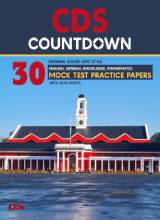History Of SCS, Bangalore
Selection Centre South is located on Cubbon Road at Bangalore. Situated in the old British Accommodation it has three boards 12, 17 and 24 SSB.
12 SSB was the first board which was raised on 1st April 1949 for selection of candidates for Army and Navy. 24 SSB was raised in December 1962.
17 SSB was moved from Roorkee in March 1976. The Selection Centre is headed by a Major General who is also the President of 17 SSB.
History Of Bangalore
Bangalore is draped over the Deccan Plateau at an altitude of 949 meters (3113 ft.) above sea level, which gives it possibly the best climate among all the cities in India.
Legend has it that Bangalore got its name from the words "Bendha KaaLu” (which means boiled beans in the local language Kannada).
King Veera Ballala of the Vijayanagara kingdom was once lost in a forest and happened to stumble upon a lonely cottage. An old woman that lived there could offer the starving king only boiled beans "Bendha KaaLu” and the place came to be known as "Bendha kaaLu ooru” (ooru in Kannada means a city).
BendhakaaLooru later came to be known as BengaLooru in Kannada and Bangalore in English. However, historical evidence shows that "BengaLooru” was recorded much before King Ballala's time in a 9th-century temple inscription in the village of Begur.
Even today "BengaLooru" exists within the city limits in Kodigehalli area and is called as "HalebengaLooru" or "Old Bangalore".
In the year 1638, Shahajirao Bhonsle, father of Shivaji, captured the city. In 1687, Aurangzeb's army captured Bangalore and sold it to the Wodeyars for a paltry sum of Rs.300,000.
The Wodeyars then built the famous Lal Bagh in 1759, one of Bangalore's most beautifully laid out gardens. In the same year, Hyder Ali received Bangalore as a jagir from Krishnaraja Wodeyar II. He fortified the southern fort and made Bangalore an army town.
When Tipu Sultan died in the 4th Mysore war in 1799, the British gave the kingdom, including Bangalore, to Krishnaraja Wodeyar III but the British resident stayed in Bangalore. At the beginning of the 19th century, the General Post Office was opened and the Cantonment was established nine years later in 1809.
In 1831, alleging misrule by Krishnaraja Wodeyar III, the British took over the administration of the Mysore Kingdom. Under the British influence, Bangalore bloomed with modern facilities like the railways, telegraph, postal and police departments.
The first train was flagged out of the city in 1859 and five years later in 1864, the lovely Cubbon Park was built by Sankey. The end of the century saw the building of Attara Kacheri and the Bangalore Palace.
The 20th century saw the arrival of the first motorcar in the city. In 1881, the British returned the city to the Wodeyars. Dewans like Sir Mirza Ismail and Sir M Visveswaraya were the pioneers to help Bangalore attain its modern outlook.
From then on, the city has grown in magnitudes, emerging into what you see and know of today. Bangalore is India's fifth largest and the fastest growing city in Asia.
Stay tuned to DDE for more content.
Jai Hind






 Order Now on Amazon
Order Now on Amazon
